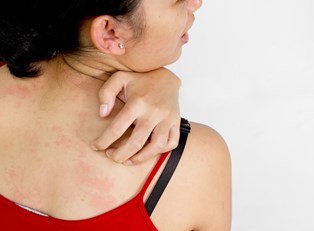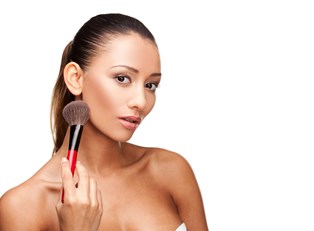Sadly, there is no cure for rosacea. This skin disease is, however, fairly treatable, especially when patients restrict their exposure to environmental, psychosocial, and dietary triggers that cause outbreaks.
Diagnosing Rosacea
Rosacea is usually diagnosed by a dermatologist, a physician who treats conditions related to the skin. A diagnosis often results following a family medical history, patient history, and thorough exam. There is no test used to determine whether you have rosacea. You may be diagnosed with one of the four subtypes of rosacea, which are based on the symptoms experienced. You may also have a combination of types.
Some symptoms and treatments overlap among the subtypes; other symptoms and treatments are unique to a certain type. Moisturizers that have a sun protection factor of at least 15 and block UVA and UVB rays are always recommended for all subtypes.
Treating Rosacea Symptoms
- Redness, Visible Blood Vessels, Bumps, and Pustules
Characterized by persistent redness, flushing and sometimes visible blood vessels, subtype 1 or erythematotelengiectatic rosacea, is most commonly treated with topical medications such as metronizadole and azelaic acid, which are also used as acne treatments. When symptoms persist, certain low-dose antibiotics designed for rosacea may be prescribed for a course of six to eight weeks.
Blood vessels visible on the surface of the skin may be treated with lasers or intense pulsed light therapy. For dry, flaky, or itchy skin, thick moisturizers are recommended as a protective barrier from weather elements. The red bumps and pustules associated with subtype 2 or papulopustular rosacea are also treated with the topical drugs and oral antibiotics, such as low-dose doxycycline.
- Skin Thickening, Disfiguration or Enlargement of the Nose
Some patients, often men, suffer from subtype 3, or "phymatous rosacea." This particularly damaging type causes thickened areas of skin on and around the nose. The skin on the cheeks or nose may appear raised, bumpy, or patchy as thickening occurs. Surgical procedures in which skin growth is cut away or cauterized are common treatments.
- Dryness of the Eye and Irritation
According to the Mayo Clinic, nearly half of people with rosacea have subtype 4 or ocular rosacea, which causes dry, red, sensitive eyes. The eyelids and surrounding areas of the eye may be especially sensitive. When left untreated, ocular rosacea may cause damage to the cornea and, in extreme cases, impair vision. Doctors will sometimes recommend washing the eyes several times a day or using eye drops when tearing is limited and the eye cannot be adequately irrigated. Rubbing the eyes should be avoided as much as possible. Only choosing eye makeup products that can be removed with minimal effort is strongly recommended.



